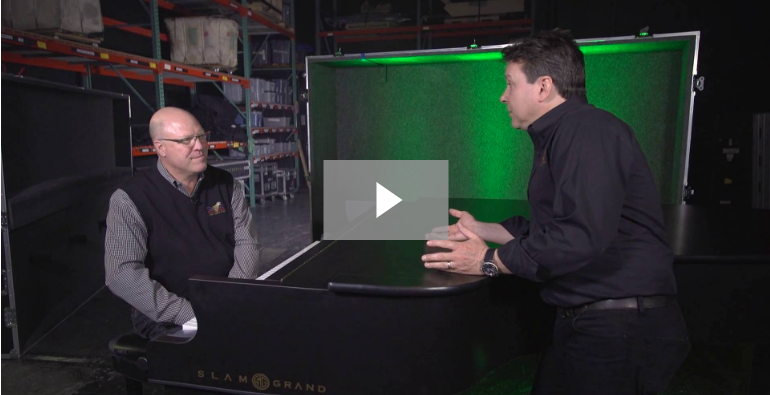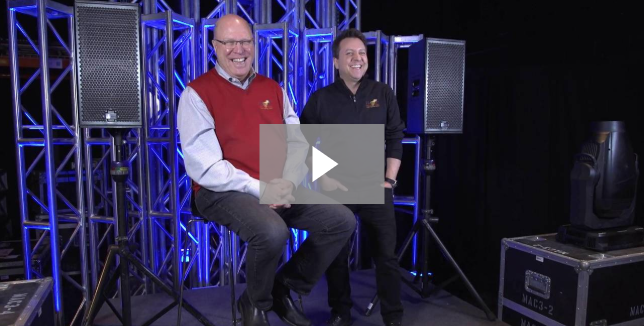April 18, 2018
7 Things Every Planner Should Know About Event Venue Selection
Some events call for a lovely setting, five-star food, live music, guest speakers, lights, displays and more. That requires a lot of planning. And, the larger your event is, the more planning you need. When people have to crane their necks or leave their seats to see the speaker, auctioneer, video, or band — or when sound quality is less-than-stellar — they’ll tune out instead of engaging or enjoying your event. The truth is, when everything is perfect, no one notices the details. But when it’s not, everyone is distracted.
It’s easier and less expensive to start with a good plan rather than forcing your event production partner to jump through hoops or just make do. If we can’t do our best work, you can’t put on the best possible event. So, whatever important presentations or intriguing entertainment you have planned, here are some “behind-the-scenes” factors to consider when it comes time for event venue selection.
Tip #1: Choose Your AV Partner Before You Select Your Venue
Then, let us help you choose the right space. Up-front professional advice can save you untold headaches and heartache, not to mention money.
“Your AV team wants to make sure they can provide the best show possible,” says Dustin Fabian, production account manager for Heroic Productions. “Some venues tie your hands in what you can actually do — not enough rig points, no rig points, not enough power, long or difficult load in, union venues, and other various guidelines. This could diminish the end product.”
According to Dustin, your AV partner should be able to help choose the venue AND review production/vendor guidelines in your venue contract.
Tip #2: Capacity Is about More Than Body Count
You need a space that will comfortably accommodate the number of attendees you expect, whether they’ll be seated at tables, arranged theater-style, or whatever your event calls for. You need room for obvious extras — food and beverage set-ups, etc.
Dustin recommends asking yourself several questions before choosing a venue:
- How many people could potentially attend?
- What will occur on stage (panels, fireside chats, demos, speakers)?
- What kind of seating will you have?
- Are there breakout sessions?
- Is there live entertainment?
- What do want your attendees to think and feel when they walk away from your event?
You need a venue that has the capacity to support whatever your event calls for. There’s more to that than checking to be sure lines of sight are clear. Read on to learn the factors that matter most to your AV pros (and, therefore, to you). You’ll want to discuss each of these points in detail with us before you sign any venue contract.
Tip #3: Square Footage
Lights, sound, video — they all take up space. Simpler, less costly set-ups use ground supported equipment, but you have to allot room for those items, the cables required to run them, and space for safe passage of nearby foot traffic.
“The ideal square footage for your venue is dependent on how many attendees there will be, the room layout (theater, banquets, crescents, etc.), and what you’re looking to do for the event,” Dustin says. “Pillars are usually a concern because they greatly reduce how many people can fit in a room and are usually bad for sight lines.”
Dustin says he believes augmented reality will reduce such issues because you’ll be able to see how certain elements affect the space before agreeing to a rental space.
Tip #4: Ceiling Height
Those chandeliers are pretty, but will they get in the way of your production? If your venue is structurally capable, you can hang anything in the air, from paper banners to an airplane. Your rigging crew will have to work around hanging lights, sprinkler systems, etc. If the ceiling is too low or has weight restrictions, you will have fewer options.
“Ceiling height is very important in the production world in that you need ample height (typically at least 10 feet) above the stage to set up rigging,” says Steve Brown, production account manager for Heroic Productions. “When you don’t have adequate ceiling height, you have to use lighting trees, which don’t provide an ideal angle of light for your stage. If ceiling height is enormous, your audio has to cover all that.”
Tip #5: Rig Points
Rigging, i.e. hanging such things as lights and speakers from the ceiling, gives your venue a “finished” look that says your event is a class act. Unfortunately, some venues don’t have built-in rig points. Others don’t even allow rigging, or they limit what you can do. An experienced professional crew is critical to ensuring efficient functionality and, most importantly, safety.
Tip #6: Ground Support
If the venue doesn’t have rig points, is there enough room to use ground supported elements? These self-contained structures are useful, but they can take up a lot of space. Other disadvantages of ground support are that the legs can cause sight-line or aesthetic issues for the show and your guests have to walk around them.
Tip #7: Power
AV equipment requires power, and that means cables, perhaps tons of both. Is there enough “juice” available to power your event? What kind of power source is available? Is it wall power, or is there a 3-phase tie-in? Where is power located? Make a room layout first, so you can plot the most efficient, least obtrusive cable paths to ensure safe walkways for your guests.
The Bottom Line
The better your up-front preparation, the better your chances of pulling off a fantastic event everyone will remember for all the right reasons.
As an event planner, you don’t have to be an expert at everything, but you have to know how to communicate well with the professionals you plan to hire. Above all, that’s your AV team. The sooner you get us involved, the better your production will be. You’ll be a hero. Or a rock star.




